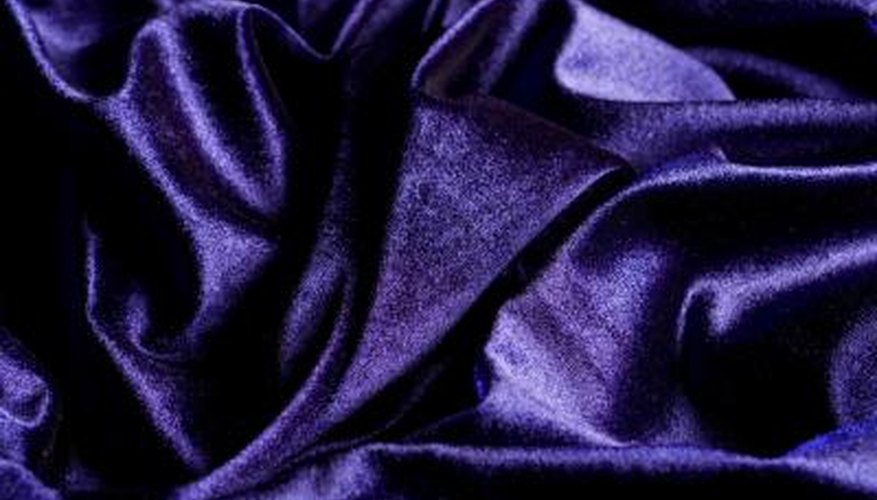There are a few reasons you will need to use Velcro, like for sticking easy-to-remove items to a board, or fastening something shut. Velcro was originally invented by George de Mestral, a Swiss engineer in the 1940s, when he noticed how cockleburs stuck to his clothing. The tiny hooks in Velcro will easily stick to a few different types of fabrics.
Wool
A tightly knit wool will stick to the hooked side of Velcro without destroying the wool itself or getting stuck between the hooks. Synthetic wool is ideal because it mimics the synthetic "loop" side of the Velcro that the hooks stick to. Using Velcro on knitted materials is suitable if you want to make a sweater that fastens in the front. You can also use this method for a sweater that is already made, or even to keep a knitted blanket around your shoulders by attaching a piece of Velcro to the front and fastening it to the other end below your neck.
- A tightly knit wool will stick to the hooked side of Velcro without destroying the wool itself or getting stuck between the hooks.
Felt
Felt and Velcro are often used together in a classroom setting for wall boards. A large piece of felt is stapled to a cork board attached to the wall, and hooked Velcro is glued to the backs of decorations or announcements. These decorations can be easily removed without causing any adhesive damage to any surfaces, like tape would. A high-quality felt is needed for this use, so that the felt lasts longer and doesn't clog up the Velcro hooks with fibres.
- Felt and Velcro are often used together in a classroom setting for wall boards.
- A high-quality felt is needed for this use, so that the felt lasts longer and doesn't clog up the Velcro hooks with fibres.
Fleece
Fleece is a durable, synthetic fabric that stands up well to being used with Velcro. There is also a kind of fleece known as "anti-pill", which means it doesn't form lint when it is washed or comes in continuous contact with other surfaces. Anti-pill fleece is better to use with Velcro because it won't loosen as easily as the regular kind of fleece. Fleece is often used for winter clothing, so gluing the back of a piece of Velcro to a child's hat will help keep his fleece scarf from coming loose.
- Fleece is a durable, synthetic fabric that stands up well to being used with Velcro.
- There is also a kind of fleece known as "anti-pill", which means it doesn't form lint when it is washed or comes in continuous contact with other surfaces.
Velvet
Velvet is appropriately used for "fancy" things, like dresses for people and even dolls. Velcro will easily stick to velvet without causing damage when separating them; very few fibres will be pulled along with the hooks. Velour mimics the softness and "pile" of velvet with the ability to stretch, but Velcro still keeps hold of the fabric because of the thickness of the fibres. When attaching the hooks of Velcro to velvet, velveteen or velour, it helps to slightly rub it back and forth to help the hooks get a good hold onto the fibres.
- Velvet is appropriately used for "fancy" things, like dresses for people and even dolls.
- Velour mimics the softness and "pile" of velvet with the ability to stretch, but Velcro still keeps hold of the fabric because of the thickness of the fibres.
